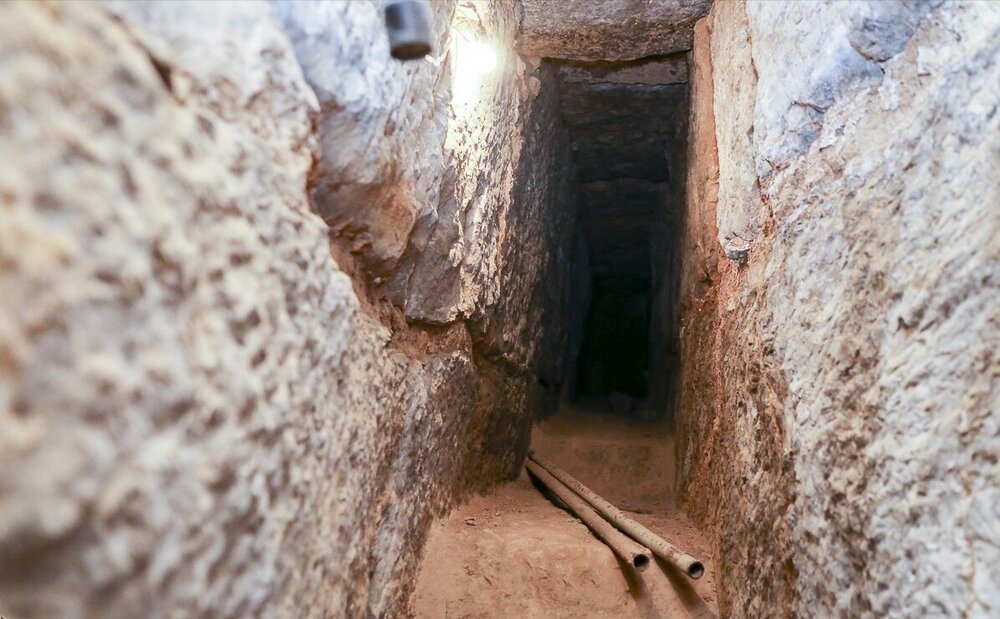Ancient skeletons unearthed in Persepolis

TEHRAN- The remains of 13 ancient skeletons have been discovered during an exploration project which is underway at the UNESCO-registered site of Persepolis, southern Fars province.
The skeletons, which belong to humans and animals, have been found in the ancient water ducts of Persepolis, and they are being studied by the archeologists to estimate the historical era they belong to, the director of the site Hamid Fadai said on Monday.
Earlier this month, a new round of exploration on Persepolis’ ancient water ducts, which are considered as unique and flawless engineering of its time, was commenced with the aim of protecting and preserving the historical site as well as disposing of surface water.
The royal city of Persepolis ranks among the archaeological sites which have no equivalent, considering its unique architecture, urban planning, construction technology, and art.
Persepolis, also known as Takht-e Jamshid, whose magnificent ruins rest at the foot of Kuh-e Rahmat (Mountain of Mercy), was the ceremonial capital of the Achaemenid Empire. It is situated 60 kilometers northeast of the city of Shiraz in Fars Province.
The city was burnt by Alexander the Great in 330 BC apparently as a revenge to the Persians because it seems the Persian King Xerxes had burnt the Greek City of Athens around 150 years earlier.
The city’s immense terrace was begun about 518 BC by Darius the Great, the Achaemenid Empire’s king. On this terrace, successive kings erected a series of architecturally stunning palatial buildings, among them the massive Apadana palace and the Throne Hall (“Hundred-Column Hall”).
This 13-ha ensemble of majestic approaches, monumental stairways, throne rooms (Apadana), reception rooms, and dependencies is classified among the world’s greatest archaeological sites.
Persepolis was the seat of the government of the Achaemenid Empire, though it was designed primarily to be a showplace and spectacular center for the receptions and festivals of the kings and their empire.
ABU/MG

Leave a Comment